Transform your event photography with these five mobile composition tricks. First, apply the rule of thirds to create dynamic off-center shots. Next, use leading lines in the venue to guide viewers' eyes to your main subject. Frame your shots with architectural elements like doorways or windows for added depth. Balance your foreground and background by adjusting depth of field and finding clean backdrops. Finally, leverage negative space to emphasize your subjects and create striking visuals. By mastering these techniques, you'll elevate your mobile event photography from amateur to professional-looking. Discover how these simple tricks can dramatically improve your event captures.
Rule of Thirds for Impact
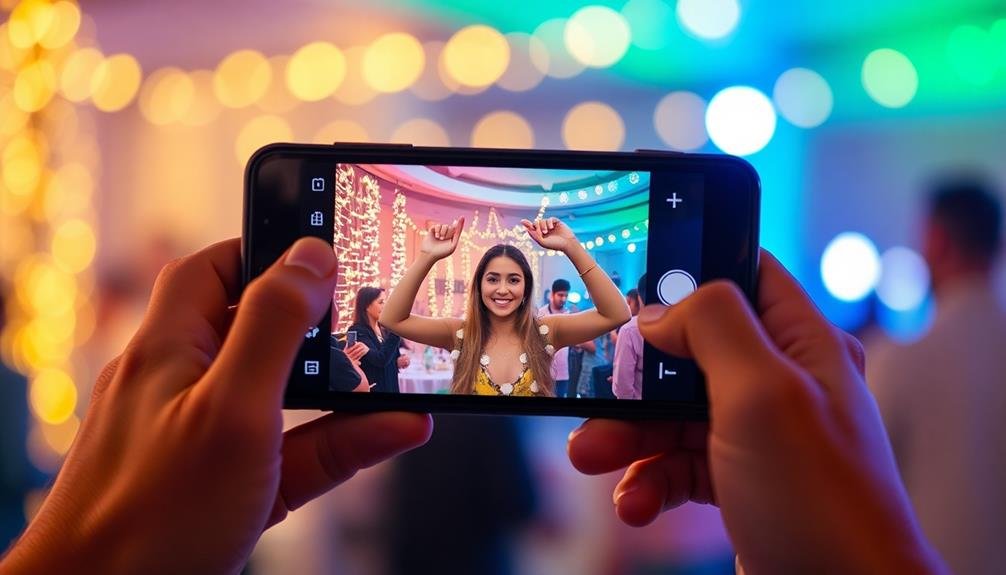
The Rule of Thirds is a fundamental principle in photography that can dramatically improve your event shots. This composition technique involves dividing your frame into a 3×3 grid and placing key elements along these lines or at their intersections.
When capturing events, you'll want to position your main subjects off-center for a more dynamic and visually appealing image. To apply this rule, activate your phone's grid feature in the camera settings. As you frame your shot, place the event's focal points along these gridlines. For example, position a speaker near the left or right vertical line rather than dead center.
When photographing group shots, align people's eyes with the upper horizontal line for a more engaging composition.
Don't forget about negative space; it's just as important as your subject. Use the Rule of Thirds to balance your frame, creating a sense of movement and drawing the viewer's eye through the image.
This technique works particularly well for candid shots, allowing you to capture the energy and atmosphere of the event while maintaining a professional look.
Leading Lines in Event Spaces
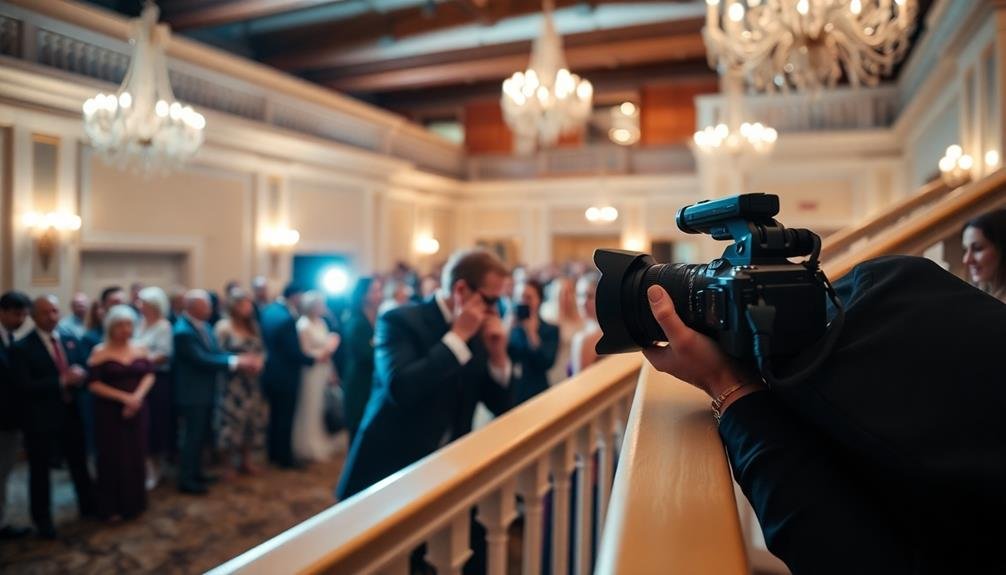
Photographers can harness the power of leading lines to create compelling event images that guide viewers' eyes through the scene. When you're shooting events with your mobile device, look for natural lines in the venue that can lead attention to your main subject. These lines might include architectural features like hallways, staircases, or rows of chairs. They can also be created by lighting elements, such as string lights or spotlights.
To effectively use leading lines, position yourself so that these lines converge towards your primary subject. This technique works particularly well for capturing speakers on stage, award recipients, or key moments during ceremonies.
Don't forget to experiment with different angles; sometimes, a low or high vantage point can emphasize leading lines more dramatically.
In outdoor events, natural elements like pathways, fences, or even rows of trees can serve as leading lines. When photographing crowds, use the lines formed by people queuing or seated in rows to draw attention to the event's focal point.
Framing With Architectural Elements
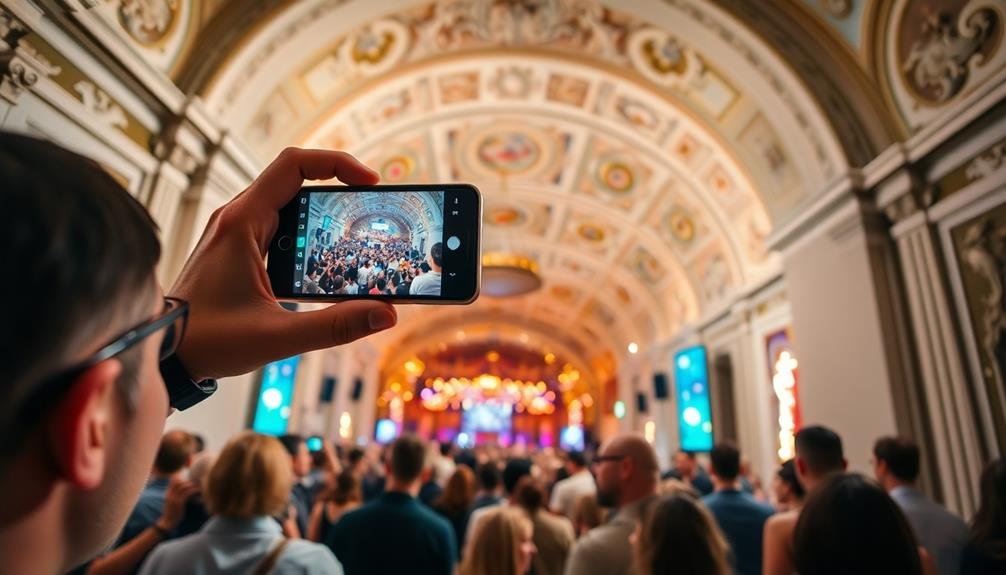
Event spaces often provide a wealth of architectural elements that can serve as natural frames for your mobile photographs. Look for doorways, archways, windows, and pillars to add depth and context to your shots. These structures can draw attention to your subjects and create a sense of place within the event.
When framing with architectural elements, consider the following techniques:
| Technique | Description | Effect |
|---|---|---|
| Symmetry | Center subject in frame | Balanced, formal look |
| Off-center | Place subject to one side | Dynamic, interesting composition |
| Layering | Use foreground and background | Adds depth and dimension |
| Contrast | Light subject, dark frame | Dramatic emphasis |
| Repetition | Multiple framing elements | Creates rhythm and pattern |
Don't be afraid to experiment with different angles and perspectives. Try shooting through partially opened doors or capturing reflections in windows. You can also use staircases, balconies, or ceiling details to add unique framing elements to your mobile event photography.
Remember to keep your main subject in focus while using architectural elements as framing devices. This technique will help guide the viewer's eye to the most important part of your image while adding visual interest and context from the event space.
Balancing Foreground and Background
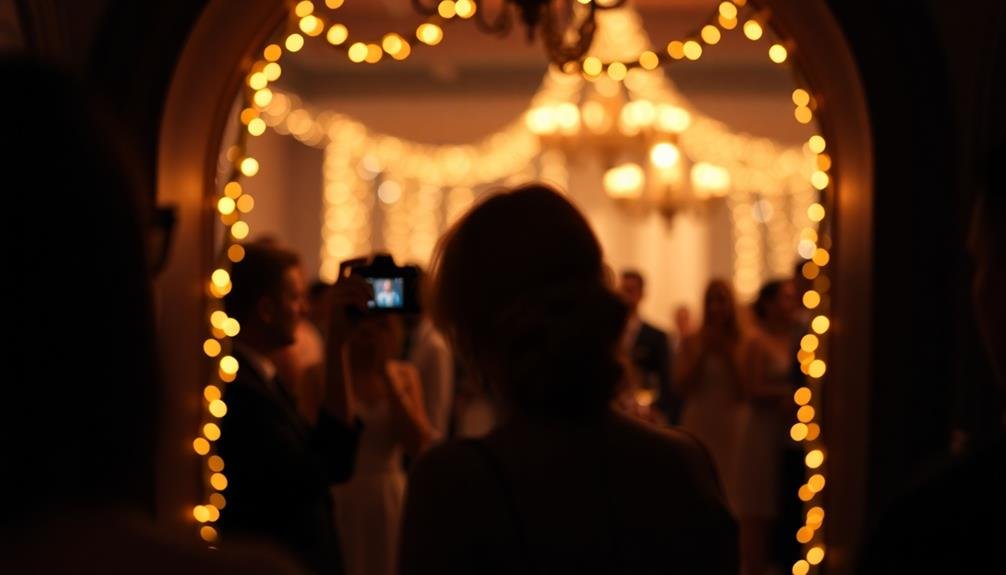
Striking a balance between foreground and background elements is essential for creating compelling mobile event photographs. As you capture the action, pay attention to how these elements interact within your frame. A well-balanced composition draws the viewer's eye to the main subject while providing context through the background.
To achieve this balance, consider the following techniques:
- Use the rule of thirds to position your main subject off-center, allowing the background to complement rather than compete with it.
- Experiment with depth of field by tapping on your phone's screen to focus on the foreground subject, creating a slightly blurred background.
- Look for leading lines in the background that guide the viewer's eye toward your main subject.
- Incorporate negative space to give your subject room to breathe and prevent a cluttered composition.
When photographing events, you'll often encounter busy backgrounds. Don't be afraid to move around or change your angle to find a cleaner backdrop.
Negative Space for Emphasis
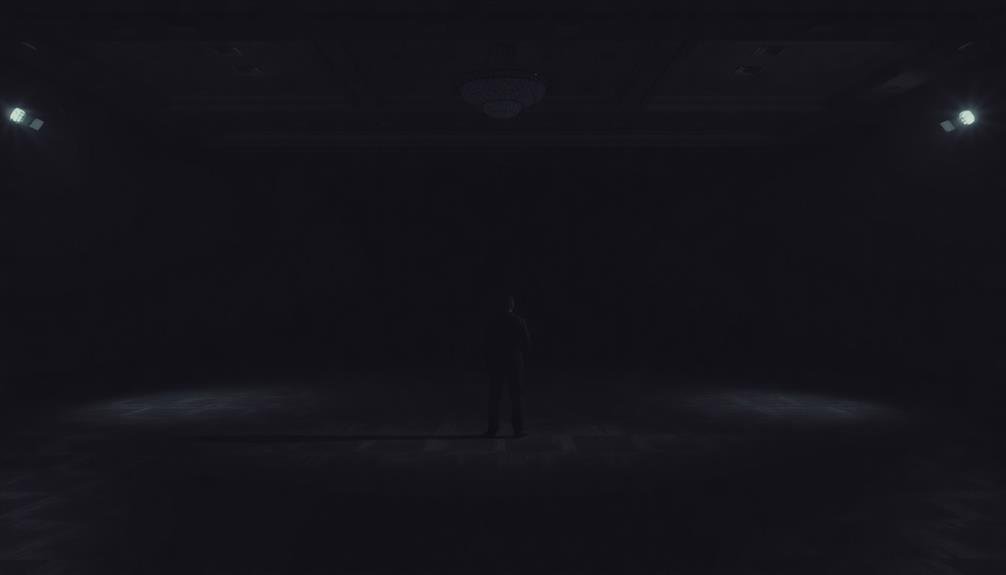
Mastering the use of negative space can dramatically elevate your mobile event photography. It's a powerful tool that draws attention to your subject and creates a sense of balance in your shots. When capturing events, look for opportunities to incorporate empty areas around your main subject. This technique can isolate your subject, making it stand out and conveying a strong message.
To effectively use negative space, consider the following tips:
| Purpose | Technique | Effect |
|---|---|---|
| Isolation | Surround with emptiness | Subject focus |
| Contrast | Use color or light | Visual impact |
| Storytelling | Frame with environment | Context and mood |
| Balance | Off-center composition | Dynamic interest |
| Simplicity | Minimize distractions | Clear communication |
Frequently Asked Questions
How Do I Handle Low-Light Situations During Indoor Events?
You'll need to adapt to low-light situations at indoor events. Use a wider aperture, increase ISO, and slow down shutter speed. Stabilize your camera, utilize available light sources, and consider using a flash or external lighting equipment.
What's the Best Way to Capture Candid Moments Without Being Intrusive?
You'll want to blend in and be discreet. Use a longer lens to maintain distance, anticipate moments, and be patient. Don't use flash, and keep your camera quiet. Practice quick, unobtrusive movements to capture authentic expressions.
Should I Use Flash for Event Photography, and if So, When?
You should use flash judiciously for event photography. It's essential in low-light situations or to fill shadows. However, don't overuse it as it can be disruptive. Try bouncing flash off ceilings for softer, more natural-looking light.
How Can I Effectively Photograph Large Groups at Events?
To effectively photograph large groups at events, you'll want to find an elevated position, use a wide-angle lens, and arrange people in rows. Don't forget to communicate clearly and take multiple shots to guarantee everyone's eyes are open.
What Camera Settings Are Ideal for Fast-Paced Event Environments?
For fast-paced events, use a fast shutter speed (1/250 or higher), wide aperture (f/2.8-f/4), and higher ISO (800-3200). You'll want to shoot in aperture priority mode and enable continuous autofocus for quick, sharp captures.
In Summary
You've now got five powerful mobile composition tricks in your event photography arsenal. By applying the rule of thirds, utilizing leading lines, framing with architecture, balancing foreground and background, and leveraging negative space, you'll capture more engaging and impactful images. Remember, these techniques aren't just rules—they're tools to enhance your creativity. As you practice, you'll develop an intuitive sense of composition that'll elevate your event photography to new heights. Keep shooting and experimenting!

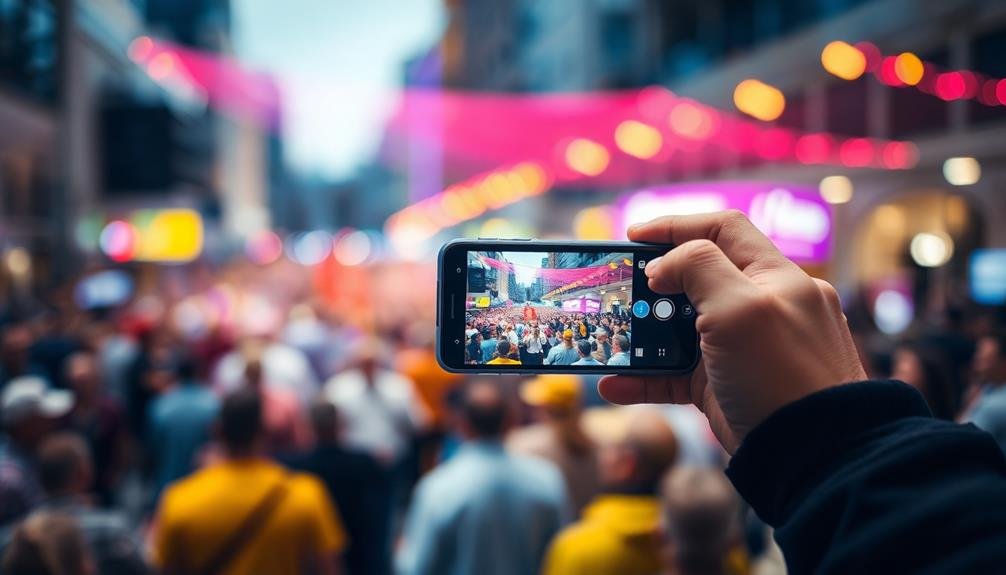



Leave a Reply